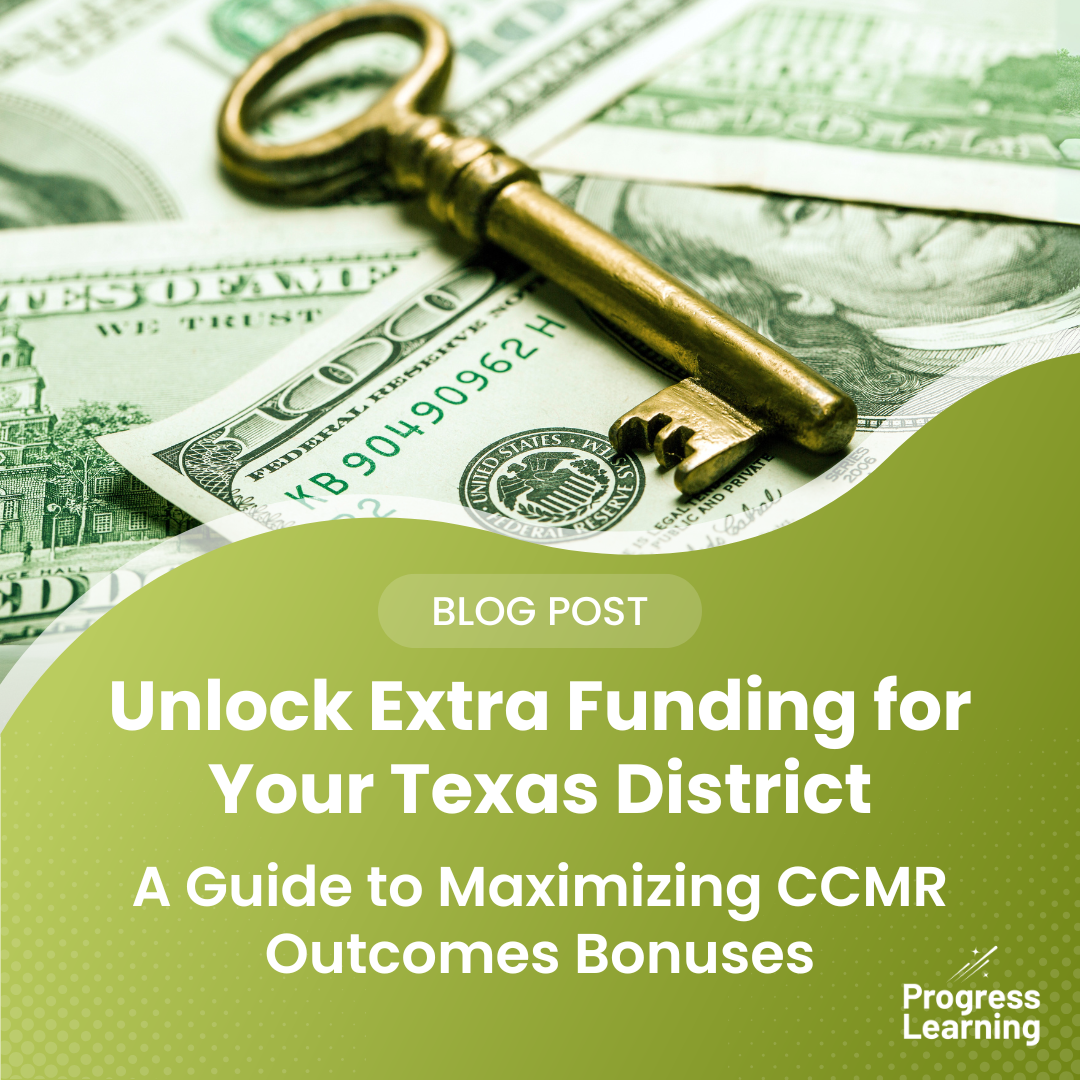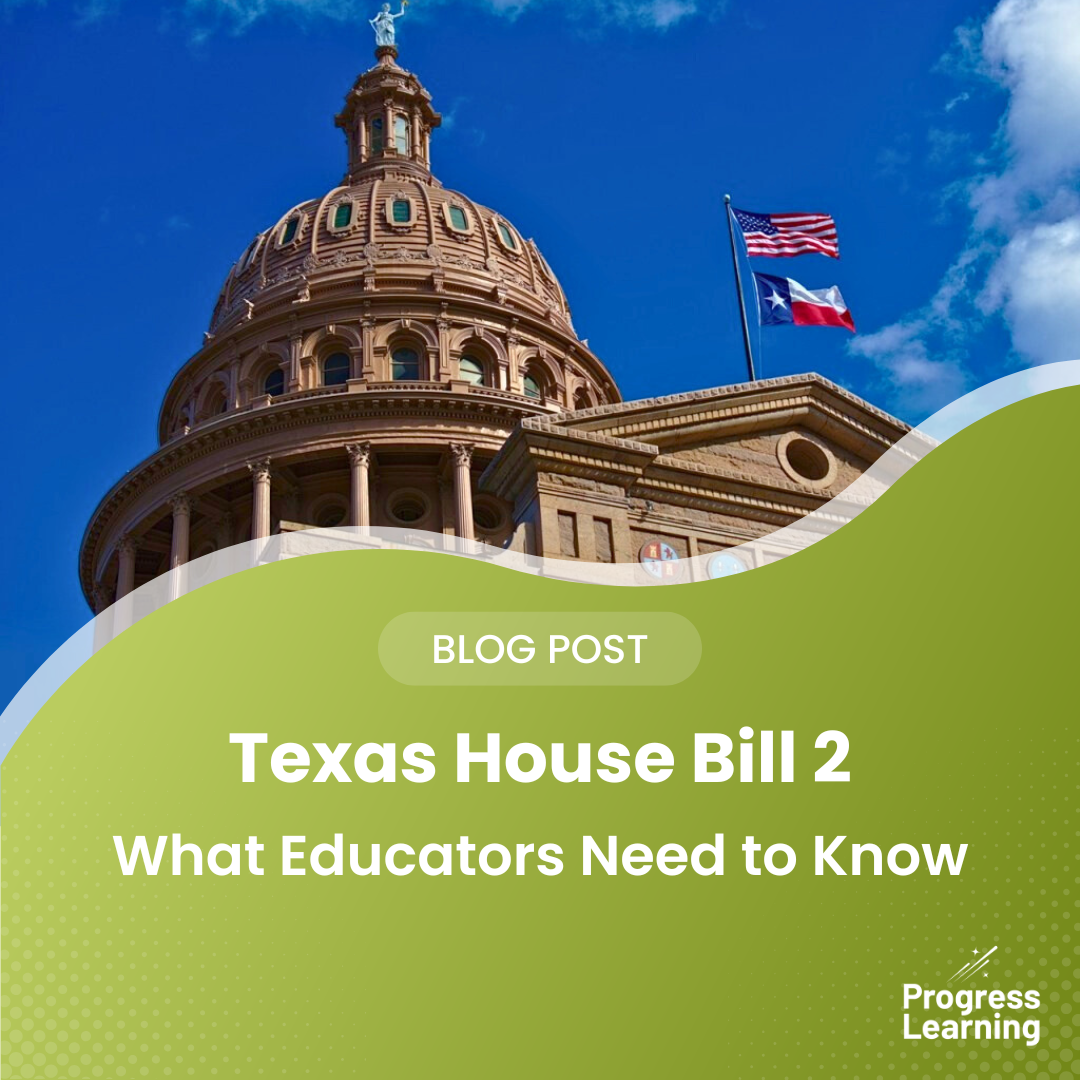2025 STAAR® Scores Are Out: Here’s What They Reveal
Each spring, STAAR® scores provide a statewide snapshot of how students are progressing and where additional support may be needed. With the redesigned STAAR® now in its second year, the 2025 results help us understand not only how students are recovering post-pandemic, but also how they’re adjusting to the exam’s deeper rigor and focus on application.
At Progress Learning, we analyzed the data to highlight trends, identify high-impact areas for growth, and offer practical next steps for schools and districts across Texas. Here’s what we found.
Small Signs of Recovery: More Students Meeting Grade Level Statewide
Across all tested grades and subjects, the percentage of students scoring at Meets Grade Level rose from 45% to 46%. While modest, this growth reflects continued academic recovery and growing alignment with the redesigned STAAR’s® demands.
Reading Language Arts (Grades 3–8, English I & II)
Middle school RLA scores continued their upward trajectory, while high school English showed slight declines, highlighting the need for stronger instructional alignment across grade bands.
- Grades 3–8 RLA Meets: 53% (highest rate since 2019)
- Grade 3: 46% → 49% (+3 points)
- Grade 5: 53% → 57% (+4 points)
- English I: 54% → 51% (–3 points)
- English II: 60% → 56% (–4 points)
Math (Grades 3–8, Algebra I)
Math performance continues to vary by grade, with gains in early and late grades and challenges in the middle years. However, Algebra I now outperforms nearly all middle school math grades, highlighting the need for stronger foundational math support earlier on.
- Grade 3: 40% → 44% (+4 points)
- Grade 5: 45% → 42% (–3 points)
- Grade 7: 31% Meets (lowest performance across math)
- Grade 8: 40% → 45% (+5 points)
- Algebra I:
- Meets: 45% → 47% (+2 points)
- Masters: +4 percentage points
Science
Despite a strong showing in high school Biology, elementary and middle school science scores remain well below pre-pandemic levels.
- Grade 5: 29% Meets (down from 47% in 2019)
- Grade 8: 46% Meets
- Biology: 57% → 62% (+5 points)
Social Studies
Approaches Grade Levels rates remain high, but students aren’t making consistent progress toward Meets or Masters Grade Level expectations especially in middle school.
- Grade 8: 30% Meets (–1 point)
- U.S. History: 68% Meets (–1 point)
Where Should Schools Focus?
One of the most practical ways to analyze STAAR® data is to look for “near-miss zones.” These are subject-grade combinations in which a high number of students are Approaching Grade Level but relatively few are Meeting or Mastering Grade Level expectations. These are opportunities to make meaningful gains by focusing on students who are just shy of proficiency.
Here are five key areas where the gap between Approaches and Meets was the widest:
| Subject & Grade | % Approaches | % Meets | Gap |
| 3rd Grade Math | 70% | 34% | 36 |
| 4th Grade Reading | 73% | 38% | 35 |
| 7th Grade Writing | 69% | 35% | 34 |
| 5th Grade Science | 68% | 36% | 32 |
| 8th Grade Social Studies | 65% | 33% | 32 |
These aren’t just numbers—they’re invitations to focus instructional time, practice, and remediation where it’s most likely to move students up a performance level. A strong Approaches rate shows students are on the right track; what they need now is support bridging that final gap.
Why These Gaps Matter
When there’s a large difference between Approaches and Meets, it often signals that students:
- Understand basic concepts
- Struggle with higher-order skills like multi-step reasoning, written responses, or data analysis
This is a challenge—but also an opportunity. The redesigned STAAR® demands more than recall. It rewards depth, analysis, and applied understanding. Progress Learning supports this shift by helping educators:
- Identify standard-level gaps quickly
- Provide targeted, TEKS-aligned remediation
- Use assessments that mirror STAAR® rigor
- Monitor progress in real-time
How Are Different Groups in Texas Performing?
While this report focuses on subject-level trends, subgroup performance remains essential to understanding the full picture. In 2025, data showed that:
- Economically disadvantaged students, emergent bilingual learners, and students receiving special education services performed well below statewide averages
- No significant subgroup gains were observed—suggesting consistent but unresolved disparities
Though not the primary focus of this analysis, these trends underscore the need for equity-driven planning and targeted instructional strategies for historically underserved populations.
Moving Forward
Texas educators are seeing progress. Elementary reading and high school science are recovering. At the same time, middle school math, science, and writing continue to present challenges—and the Approaches-to-Meets gaps point to where the biggest instructional gains can happen next.
As you plan for the 2025–2026 school year, here are three questions to guide your strategy:
- Where are students just shy of Meeting Grade Level?
- How are subgroup needs being addressed through targeted supports?
- Do our assessments and instructional tools reflect STAAR’s® new rigor?
At Progress Learning, we help schools:
- Build and deliver STAAR®-aligned assessments
- Identify learning gaps early with diagnostics
- Provide adaptive intervention in math, reading, and science
- Track growth from Approaches to Meets with real-time reporting
- Get results! At Hillcrest Elementary in Nederland, ISD, students who used Progress Learning were 42% more likely to Meet or Master Grade Level expectations.
As we head into the 2025–2026 school year, let’s move from catching up to accelerating forward.
Need more support to help your students prepare for STAAR® in the 2025 – 2026 school year? Get a demo below to see how Progress Learning can support your school or district.


